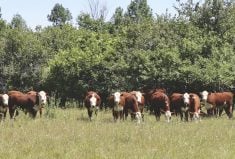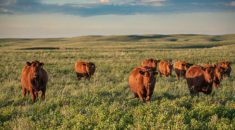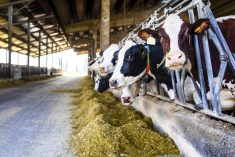Glacier FarmMedia – Despite all the uncertainties, carbon markets are an opportunity for farmers and should be seen as a business opportunity, says the head of the Alberta-based non-profit Biological Carbon Canada.
“Carbon represents a brand new market,” Graham Gilchrist said at a recent virtual event hosted by an Ontario input supplier and grain dealer.
“When it shows up in your area there will be people showing up saying, ‘I think we can do this.’ You have to dust off your farm management (hat) and take a look at some of this stuff.”
Read Also

Moo translator and methane measures: There’s an app for that
Dalhousie University researchers use artificial intelligence to create new dairy farm apps that analyze cattle sounds and measure methane.
Currently, there are four types of carbon markets, said Gilchrist, an agrologist whose organization was created to help farmers “achieve an economic return for actions” that reduce greenhouse gas emissions or help store carbon.
A regulated carbon market is funded by levies charged to emitters by government, and uses protocols that designate how to establish, measure and verify emissions, as well as how to retain or grow a carbon sink. Emitters can either pay the levy or buy offsets. The latter involves payments made to the producer for enacting, refraining from, or continuing specific practices such as reduced tillage.
A second type is volunteer markets, which are developed by companies and organizations trying to achieve emission reductions. Like regulated markets, these are based on protocols identifying how to find and achieve reductions.
But the protocols and measurement methods used by different groups make both markets challenging to navigate, said Gilchrist.
“We’re dealing with proxies, estimates, good research and modelling, but it’s a far cry from the oil and gas patch where there are meters on everything that moves,” he said.
“It’s coming out of a vacuum because to date it’s been very tough to get traction on discussion around weights and measures.”
However, there are groups trying to remedy this problem by developing general parameters for carbon markets, he added.
There are also issues with payments as agreements aren’t typically as solid as grain contracts or livestock manifests, said Gilchrist.
A third type of carbon market is where a company or organization requires production data that allows it to make a specific claim. For example, to include a carbon footprint number on a box of cereal, General Mills requires specific information from the grower.
The company may pay for the data in some way, but generally speaking, producers have to supply the information if they want to be able to sell to the company, said Gilchrist. In other words, non-compliance means exclusion from the market.
Category four is a broad group comprising personal service agreements between organizations and landowners, with the former paying the latter for measures that protect or enhance the environment. ALUS (Alternative Land Use Services) and Ducks Unlimited are examples of organizations that use carbon pricing.
No matter what type of carbon market you’re dealing with, it’s important to understand the terms and obligations, said Gilchrist.
“They all have market and contract risk,” he said. “You’re getting paid for it but be clear on what you’re getting paid to do or not to do.”
Different companies, government and groups will want different things, and cannot be lumped together, he added.
Opportunities to change farm management practices are similarly diverse, ranging from creating carbon sinks to reducing field travel by a pass or two.
“The (carbon) levy is not the only game in town,” he said. “All these other markets exist, too. Agriculture will probably turn and move rather quickly on carbon if we were exposed instead of being exempt from all the emission levies on your farm.”
Matt McIntosh is a contributor to Farmtario. His article appeared in the Jan. 10, 2022 issue.















